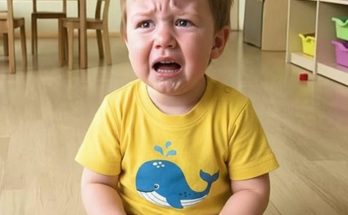A deeply concerning incident involving a teenage girl has gained national attention after she was hospitalized with severe internal injuries caused by the insertion of a non-medical object. Doctors say the case underscores an urgent need for education around health, safety, and open communication between young people and their families.
Emergency Medical Response
According to reports, the teenager was rushed to the hospital after experiencing extreme pain and complications. Upon arrival, doctors determined that she had sustained significant internal damage. A surgical team performed emergency procedures to remove the object and repair trauma to the affected areas.
Hospital staff confirmed that the girl’s condition was initially critical but stabilized after surgery. While she is expected to recover, physicians emphasized that the risks in such situations can be life-threatening, including internal bleeding, severe infection, or long-term reproductive health consequences.
Medical Warnings
Health experts are using the case to warn adolescents and families about the dangers of inserting foreign objects into the body. Everyday items such as pens, pencils, or other household objects are not designed for medical or intimate use. They can easily cause tears, tissue damage, or introduce bacteria that lead to dangerous infections.
“Objects not intended for medical use pose enormous risks when inserted internally,” explained one pediatric gynecologist. “These items can splinter, break, or create trauma that requires extensive surgery to correct. In the worst cases, the complications can be fatal.”
Importance of Education and Communication
Pediatricians and mental health professionals stress that incidents like this often arise from a mix of curiosity, misinformation, and lack of guidance. Adolescence is a time when many young people are exploring questions about their bodies, but without accurate information, experimentation can take dangerous forms.
Experts are urging parents and caregivers to engage in open, judgment-free conversations about anatomy, sexual health, and personal safety. “Shame or silence around these topics can push teens to seek answers elsewhere — often online — where content may be misleading or unsafe,” said a child psychologist. “What’s most important is creating an environment where kids feel comfortable asking questions and learning the facts.”
The Role of Social Media
The incident has gained traction on social media, where many expressed shock and concern. At the same time, experts note that online platforms can play a role in influencing risky behaviors. Viral challenges, misinformation, or casual discussion of unsafe practices can encourage teens to experiment without understanding the consequences.
This, health professionals argue, highlights the importance of reliable sexual health education both at school and at home. Comprehensive education can dispel myths, set clear boundaries, and give young people the knowledge they need to make safer decisions.
A Critical Message from Healthcare Providers
Doctors are reiterating a clear warning: non-medical objects should never be inserted into the body. Safe practices require products designed for health or hygiene, used in accordance with medical guidance. Anything else carries unpredictable and potentially life-altering consequences.
“This case should serve as a wake-up call,” one physician said. “With the right education and communication, it’s entirely preventable. We want families and educators to use this moment as an opportunity to talk openly about health, safety, and respect for the body.”
As the story continues to circulate, healthcare professionals hope that it leads not to fear, but to constructive dialogue — empowering teens with knowledge, reducing stigma, and preventing similar medical emergencies in the future.



